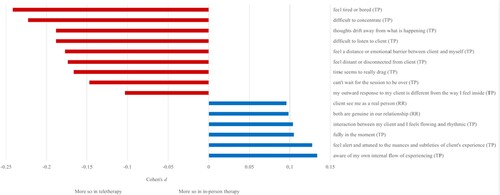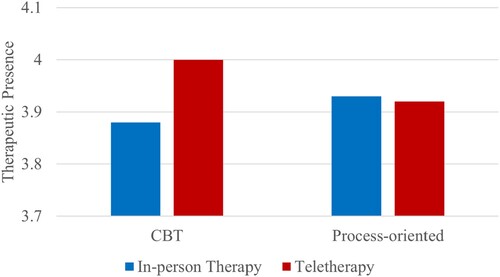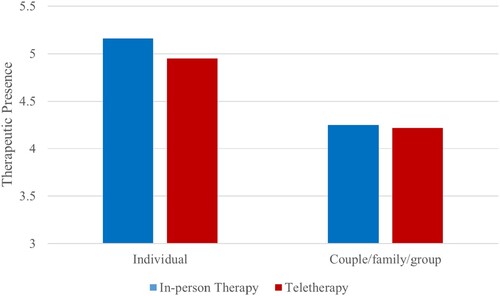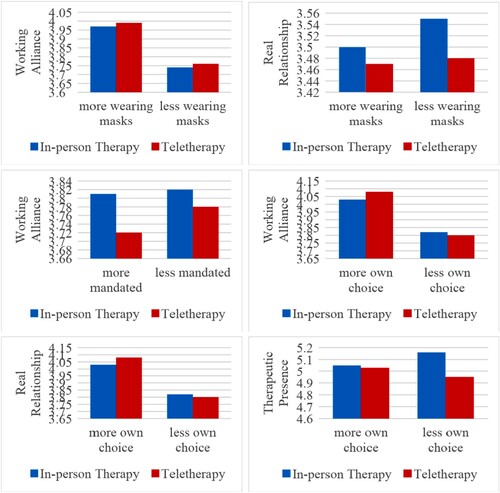Figures & data
Table I. Descriptive statistics (N = 826).
Table II. Comparison of relational variables for in-person therapy vs. teletherapy.
Figure 1. Effect sizes of the 15 items that differed the most between in-person and teletherapy.
Note: We selected all the items with an effect size d ≥ .10. The original items were paraphrased in the figure. The center line indicates no difference, positive numbers indicate larger values in-person, and negative values indicate larger values in teletherapy. (TP) = the item is from the therapeutic presence measure; (RR) = the item is from the real relationship measure.

Figure 2. Working alliance differences between in-person and teletherapy by therapeutic orientation.
Note: The Y-axis does not start at 0 and does not reflect the full Likert scale of the measure.

Figure 3. Therapeutic presence differences between in-person and teletherapy by therapeutic orientation.
Note: The Y-axis does not start at 0 and does not reflect the full Likert scale of the measure.



